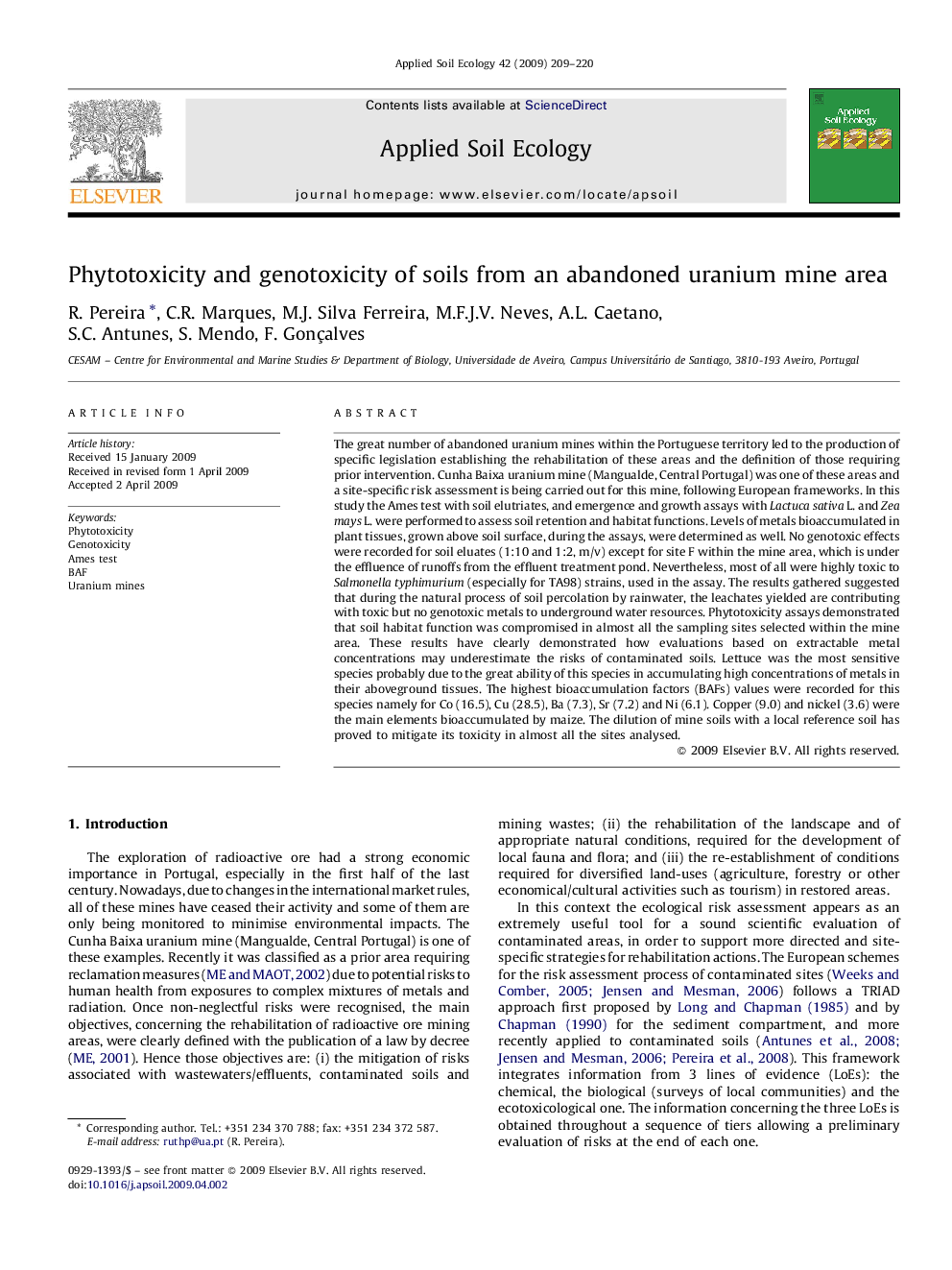| کد مقاله | کد نشریه | سال انتشار | مقاله انگلیسی | نسخه تمام متن |
|---|---|---|---|---|
| 4382868 | 1304236 | 2009 | 12 صفحه PDF | دانلود رایگان |
عنوان انگلیسی مقاله ISI
Phytotoxicity and genotoxicity of soils from an abandoned uranium mine area
دانلود مقاله + سفارش ترجمه
دانلود مقاله ISI انگلیسی
رایگان برای ایرانیان
کلمات کلیدی
موضوعات مرتبط
علوم زیستی و بیوفناوری
علوم کشاورزی و بیولوژیک
بوم شناسی، تکامل، رفتار و سامانه شناسی
پیش نمایش صفحه اول مقاله

چکیده انگلیسی
The great number of abandoned uranium mines within the Portuguese territory led to the production of specific legislation establishing the rehabilitation of these areas and the definition of those requiring prior intervention. Cunha Baixa uranium mine (Mangualde, Central Portugal) was one of these areas and a site-specific risk assessment is being carried out for this mine, following European frameworks. In this study the Ames test with soil elutriates, and emergence and growth assays with Lactuca sativa L. and Zea mays L. were performed to assess soil retention and habitat functions. Levels of metals bioaccumulated in plant tissues, grown above soil surface, during the assays, were determined as well. No genotoxic effects were recorded for soil eluates (1:10 and 1:2, m/v) except for site F within the mine area, which is under the effluence of runoffs from the effluent treatment pond. Nevertheless, most of all were highly toxic to Salmonella typhimurium (especially for TA98) strains, used in the assay. The results gathered suggested that during the natural process of soil percolation by rainwater, the leachates yielded are contributing with toxic but no genotoxic metals to underground water resources. Phytotoxicity assays demonstrated that soil habitat function was compromised in almost all the sampling sites selected within the mine area. These results have clearly demonstrated how evaluations based on extractable metal concentrations may underestimate the risks of contaminated soils. Lettuce was the most sensitive species probably due to the great ability of this species in accumulating high concentrations of metals in their aboveground tissues. The highest bioaccumulation factors (BAFs) values were recorded for this species namely for Co (16.5), Cu (28.5), Ba (7.3), Sr (7.2) and Ni (6.1). Copper (9.0) and nickel (3.6) were the main elements bioaccumulated by maize. The dilution of mine soils with a local reference soil has proved to mitigate its toxicity in almost all the sites analysed.
ناشر
Database: Elsevier - ScienceDirect (ساینس دایرکت)
Journal: Applied Soil Ecology - Volume 42, Issue 3, July 2009, Pages 209-220
Journal: Applied Soil Ecology - Volume 42, Issue 3, July 2009, Pages 209-220
نویسندگان
R. Pereira, C.R. Marques, M.J. Silva Ferreira, M.F.J.V. Neves, A.L. Caetano, S.C. Antunes, S. Mendo, F. Gonçalves,